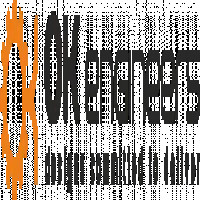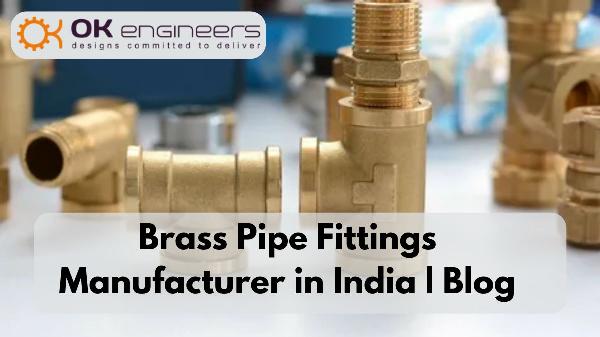Brass Hose Fittings: The Unsung Heroes of Fluid Handling Systems

Strong 8k brings an ultra-HD IPTV experience to your living room and your pocket.
Introduction
When it comes to fluid handling systems, there are many components that demand attention: valves, pipes, and pumps, to name a few. Yet, one essential component often goes unnoticed — Brass Hose Fittings. These small but mighty parts play a crucial role in maintaining the efficiency and integrity of fluid systems across industries. From automotive to manufacturing, brass hose fittings are indispensable in ensuring that liquids and gases are conveyed securely and efficiently.
In this blog, we’ll delve into why brass hose fittings are vital for fluid handling systems, exploring their characteristics, benefits, and common applications. By the end, you'll appreciate how these seemingly modest components have earned their place as unsung heroes.
What are Brass Hose Fittings?
Brass hose fittings are connectors made from brass, a durable alloy of copper and zinc. Their primary function is to connect hoses to various systems for the purpose of transporting fluids like water, air, oil, and gases. These fittings create a secure seal, preventing leakage and ensuring a steady flow of fluids through complex systems.
Types of Brass Hose Fittings
Barbed Fittings: These fittings have ridges that hold the hose securely in place. They are ideal for low-pressure applications and provide excellent grip.
Compression Fittings: These create a watertight seal without the need for soldering or adhesives. They are commonly used in plumbing systems.
Push-to-Connect Fittings: As the name suggests, these fittings allow hoses to be connected by simply pushing them into place. They’re used in situations where speed and efficiency are essential.
Threaded Fittings: These fittings screw into place, offering a tight connection ideal for high-pressure systems.
Why Brass? The Material of Choice for Hose Fittings
Brass has long been a popular choice for hose fittings due to its unique combination of properties. Its durability, resistance to corrosion, and machinability make it ideal for fluid handling systems. Here are the key reasons why brass hose fittings outperform many other types of fittings:
1. Corrosion Resistance
Brass is naturally resistant to corrosion, especially from water and moisture. Unlike steel, which can rust over time, brass remains unaffected by exposure to various fluids. This makes brass hose fittings a reliable choice for both indoor and outdoor applications, ensuring longevity even in harsh environments.
2. Durability and Strength
While brass is softer than materials like steel, it’s incredibly strong for its weight. This makes it perfect for use in demanding fluid handling systems where durability is essential. Brass hose fittings can withstand high pressures, making them suitable for heavy-duty applications without fear of breakage or wear.
3. Malleability
Brass is easy to shape and mold, which is why it’s commonly used in manufacturing complex fittings. Its malleability ensures precision in the construction of various fitting types, allowing for tight, secure connections that are less likely to leak.
4. Thermal Conductivity
Brass has excellent thermal conductivity, meaning it can withstand and efficiently dissipate heat. This makes brass hose fittings ideal for high-temperature applications, such as in automotive cooling systems or industrial fluid systems.
5. Versatility
Brass hose fittings are compatible with many types of hoses and systems, from rubber and plastic hoses to metal piping. This versatility makes them the go-to option for a wide range of industries, from agriculture to HVAC systems.
Common Applications of Brass Hose Fittings
Brass hose fittings are used in a variety of industries due to their versatility and durability. Here are some of the most common applications:
1. Automotive Industry
Brass hose fittings are commonly found in vehicles, where they play a critical role in the cooling, fuel, and hydraulic systems. They provide reliable connections for coolant lines, fuel hoses, and transmission systems, ensuring efficient fluid movement.
2. Plumbing Systems
In residential and commercial plumbing, brass hose fittings are frequently used for water distribution systems. Their corrosion resistance makes them ideal for long-term use in both hot and cold water applications.
3. Agriculture
Farmers rely on brass hose fittings for irrigation systems. These fittings are essential for connecting hoses to water pumps and sprinklers, providing consistent water flow to crops.
4. HVAC Systems
Heating, ventilation, and air conditioning systems require durable and reliable fittings to connect various components. Brass hose fittings are often used due to their ability to withstand high pressures and temperatures in HVAC systems.
5. Industrial Machinery
Brass hose fittings are also vital in industrial machinery, where they are used to connect hoses carrying oils, gases, and other fluids. Their reliability and strength ensure that the machinery functions without leaks or interruptions.
Advantages of Using Brass Hose Fittings
Brass hose fittings come with several key advantages that make them superior to alternatives like plastic or steel:
1. Long Lifespan
One of the main benefits of brass hose fittings is their long lifespan. They can last for decades without significant wear and tear, making them a cost-effective solution in the long run.
2. Leak Prevention
Due to their precise manufacturing and robust sealing capabilities, brass hose fittings are excellent at preventing leaks. This is especially important in fluid handling systems, where even a small leak can lead to inefficiency, damage, or safety hazards.
3. Low Maintenance
Brass hose fittings require very little maintenance. Once installed, they don’t need frequent inspections or replacements, reducing downtime and saving costs on repairs.
4. Temperature Tolerance
Brass can withstand both high and low temperatures, making it suitable for systems that operate under extreme conditions. Whether in a high-heat industrial setting or in freezing weather, brass hose fittings perform reliably.
5. Environmentally Friendly
Brass is a recyclable material, which adds to its appeal for environmentally conscious industries. At the end of their life cycle, brass hose fittings can be melted down and repurposed, reducing the need for new raw materials.
Choosing the Right Brass Hose Fittings
Not all brass hose fittings are created equal. When selecting fittings for your fluid handling system, consider the following factors:
Size: Ensure that the fitting is the correct size for the hose or pipe it’s connecting to.
Pressure Rating: Different fittings are rated for different pressure levels. Always choose a fitting that can handle the pressure of your system.
Compatibility: Verify that the fitting is compatible with the type of fluid being transported. While brass is suitable for most fluids, it’s always good to double-check.
Temperature Resistance: Choose a fitting that can withstand the temperature range of your system.
Conclusion
Brass hose fittings may be the unsung heroes of fluid handling systems, but their importance cannot be overstated. Their durability, versatility, and corrosion resistance make them a top choice for a wide range of applications, from automotive and agriculture to HVAC and industrial machinery. The next time you encounter a fluid handling system, take a moment to appreciate the critical role that brass hose fittings play in keeping everything running smoothly.
Whether you’re installing a new system or upgrading an existing one, choosing brass hose fittings ensures that you have a reliable, long-lasting, and efficient solution for your fluid transport needs. With their exceptional performance and low maintenance, these fittings truly live up to their reputation as heroes in the world of fluid handling.
Note: IndiBlogHub features both user-submitted and editorial content. We do not verify third-party contributions. Read our Disclaimer and Privacy Policyfor details.



